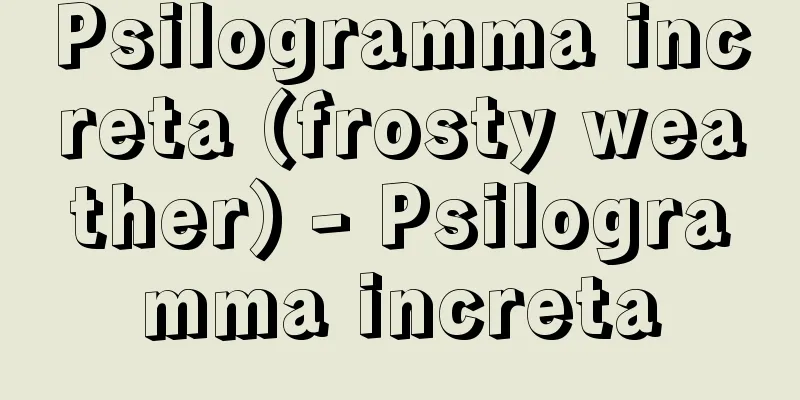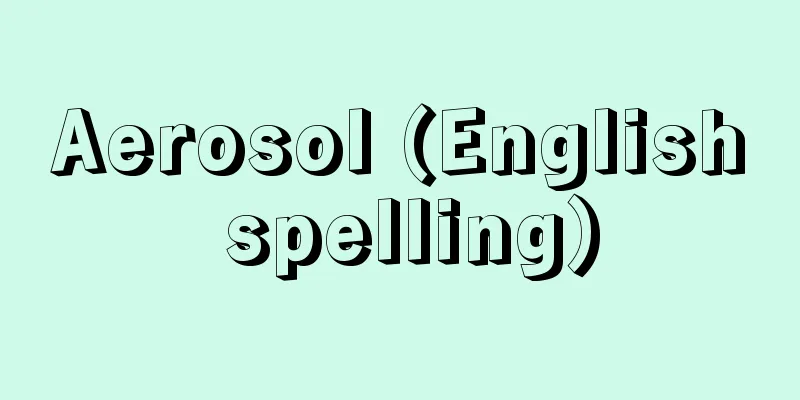Nakahara Chuya

|
Poet. Born on April 29, 1907, in Shimounoryo Village, Yamaguchi Town, Yoshiki County, Yamaguchi Prefecture (present-day Yuda Onsen 1-chome, Yamaguchi City), as the eldest son of Kashimura Kensuke, an army surgeon, and his mother Fuku. When Kensuke was eight years old, he became a resident of Nakahara, Fuku's native place, and was adopted by Masakuma and Koma, who were running a clinic in Yuda, and took the surname Nakahara. He died of tuberculous encephalopathy on October 22, 1937 (Showa 12), at his residence in the grounds of Jufukuji Temple in Kamakura, just before planning to return home. As a poet, Nakahara Chuya resolved to make poetry his main career around 1923 (Taisho 12), and in the summer of 1925 he finally decided to devote himself to poetry, passing through the stage of "having pretty much established a direction with 'Morning Song'" the following year (according to his "Poetic Resume"), and dying at the age of 30 and 6 months, his life as a poet was just over 10 years. It was only after his death, especially after the publication of the complete works published by Sogensha, that the name of Nakahara Chuya the poet became widely known beyond the poetry and literary circles as his lyricism was accepted, and he began to be widely read as one of the leading poets of the Showa era. His first collection of poems, Songs of the Goat (published by Bunpodo in December 1934), was limited to 200 copies, many of which were donated to acquaintances and friends, and his second collection of poems, Songs of the Bygone Days (published by Sogensha in April 1938), was not published until six months after his death. However, the titles of these two collections, declared as "songs," as well as the presentation of "songs" in poem titles such as "Songs of the Sinner," "Songs of the Living," "Songs of the Young Beast," "Stubborn Songs," "Clown Songs," and "Songs without Words," well illustrate Nakahara's artistic essence and the characteristics of his poetic style. It seems that Nakaya inherited an affinity for Christianity from his adoptive grandparents, Masakuma and Koma, who were devout Christians, and a love of literature from his parents. Hoping for a bright future, his parents had a fervent educational policy for their successor, whom they had gotten seven years after their marriage, and while this enabled them to mold the young Nakaya into a child prodigy, it also brought about a harsh reality in Nakaya's heart, making him reminisce, "My life was so sad, that it was tampered with too early by incompetent gardeners" ("Song of the Sinner, to Abe Rokuro") and even make him feel, "My home life after I entered school was really like an antlion's pit" ("Chiba Temple Notes"). Nakahara eventually became so absorbed in literature that he abandoned his studies, lived in Kyoto, then moved to Tokyo, where he suffered setbacks both as a doctor and as a person living a normal life, but during this time he abandoned writing tanka and novels, left Dadaism, encountered French symbolist poetry, and steadily developed his distinctive lyrical talent for poetry. The appeal of his 350 poems, including the two poetry collections and unpublished poems, and his theory of poetry, which experienced the pre-nominal world as recognized mainly in "Notes on Art Theory," along with his pure poetic spirit, continue to captivate many people today. More than half a century has passed since Nakahara's death, and the new edition published by Kadokawa Shoten, which now includes an annotated volume, has shed light on the full picture of Nakahara's life, including not only his poetry but also his novels, critiques, translations, diaries, and more, providing the foundation for basic research, author studies, and work studies. In addition to recollections by many friends and acquaintances, there are also works such as "The snow falling on me speaks of my son Nakahara Chuya" by his mother Fuku, "My brother Nakahara Chuya and his ancestors" by his fourth brother Shiro, "A journey on the sea - about Chuya and Santoka" by his fifth brother Goro, "Nakahara Chuya and his ancestors" by Hasegawa Yasuko, and "Nakahara Chuya: the love that never returns" by Noda Shinkichi. In 1994, the Nakahara Chuya Memorial Museum was opened on the site of his birthplace at 1-11 Yudaonsen, Yamaguchi City. [Kazuo Okazaki] "New Edition of the Complete Works of Nakahara Chuya, 9 volumes total (2000-2004, Kadokawa Shoten)" ▽ "My Nakahara Chuya, by Kawakami Tetsutaro (1974, Showa Publishing)" ▽ "Nakahara Chuya: Songs without Words, by Nakamura Minoru (1990, Chikuma Shobo)" ▽ "Nakahara Chuya: Towards the Unnamable, by Okazaki Kazuo (2005, Shintensha)" ▽ "Nakahara Chuya: Beginnings with Sadness, by Sasaki Mikio (2005, Misuzu Shobo)" ▽ "Nakahara Chuya, by Ooka Shohei" ▽ " The Unknown Flame: A Critical Biography of Nakahara Chuya, by Akiyama Shun" ▽ "A Critical Biography of Nakahara Chuya, by Yoshida Kazuo (all Kodansha Bungei Bunko)" [References] | | | |©Shogakukan Library "> Nakahara Chuuya Source: Shogakukan Encyclopedia Nipponica About Encyclopedia Nipponica Information | Legend |
|
詩人。明治40年4月29日、山口県吉敷(よしき)郡山口町下宇野令(しもうのりょう)村(現山口市湯田温泉1丁目)に陸軍軍医の父柏村謙助、母フクの長男として出生。満8歳のとき、謙助がフクの原籍中原の人となり、湯田で医院を開業していた政熊・コマ夫妻との養子縁組を決め、中原姓となった。結核性の脳症によって1937年(昭和12)10月22日、帰郷計画の直前に鎌倉の寿福寺境内の寓居(ぐうきょ)に没した。 詩人としての中也は、1923年(大正12)ごろ詩を本職とする覚悟を、また1925年の夏にいよいよ詩に専心しようと決意し、その翌年「「朝の歌」にてほぼ方針立つ」という段階(「詩的履歴書」による)を経て誕生、30歳6か月で没した詩人としての生涯は、おおよそ10年余であった。そして、詩人中原中也の名がその抒情性の受容とともに詩壇、文壇の内側を越え、広く昭和時代を代表する詩人の一人として読み継がれるようになったのはほとんどその死後のこと、ことに創元社版全集刊行以後のことといってよい。 第一詩集『山羊(やぎ)の歌』(1934年12月、文圃堂刊)は、限定200部、そのうちに知人友人たちへの寄贈も多くあり、第二詩集『在りし日の歌』の刊行(1938年4月、創元社刊)も、没後半年を経てのことであったが、『歌』として宣言された二つの詩集題、また「つみびとの歌」「生ひたちの歌」「幼獣の歌」「頑是ない歌」「お道化うた」「言葉なき歌」などの詩題における「歌(うた)」の提示には、中也の芸術的本質と詩法の特質がよく示されている。 中也は、生い立ちにおいて、信仰心の厚いクリスチャンであった養祖父母政熊、コマの2人からキリスト教への親和性を、また父母からは文学好きの素養を受け継いで育ったとみえる。両親は確かな将来を願うゆえの熱心な教育方針で結婚後7年を経て得たこの後継に接し、それによって幼い中也を神童に仕立てあげ得たものの、その心に、「わが生は、下手な植木師らにあまりに早く、手を入れられた悲しさよ」(「つみびとの歌 阿部六郎に」)と述懐させ、また、「学校に入りましてからの家庭生活は、実に蟻地獄(ありじごく)のようでございました」(「千葉寺雑記」)とまで感じさせる過酷な現実をもたらしてもいた。 中也は、やがて、文学にのめりこんで学業を破綻(はたん)させ、京都生活を経て、東京へ出、医家の後継としてもまた実生活者としても挫折(ざせつ)しながら、この間短歌・小説の創作を離れ、ダダイズムを離れ、フランス象徴詩との出会いを経て、特質的な抒情の詩才を一筋に開花させていった。二つの詩集のほか、未発表の詩篇(しへん)をあわせて生涯350篇ほどの詩作品の魅力と、「芸術論覚え書」を中心に認められる名辞以前の世界を体感した詩論は、その純粋な詩精神とともに、今日も多くの人をとらえてやまない。 没後半世紀をこえる中也研究は、現在『解題篇』を伴う新編の角川書店(かどかわしょてん)版が、その詩業のほか、小説、評論、翻訳、日記などをあわせた中也の全貌(ぜんぼう)を明らかにし、基礎研究、作家論、作品論の基盤を支えている。 なお、多くの知友による回想などのほか、母フクに『私の上に降る雪は わが子中原中也を語る』、四弟思郎に『兄中原中也と祖先たち』、五弟呉郎に『海の旅路 中也、山頭火のこと』、長谷川泰子(やすこ)に『ゆきてかへらぬ 中原中也との愛』、野田真吉に『中原中也 我が青春の漂白』などがある。1994年(平成6)、山口市湯田温泉1-11の生家跡地に中原中也記念館が開館した。 [岡崎和夫] 『『新編中原中也全集』全9冊(2000~2004・角川書店)』▽『河上徹太郎著『わが中原中也』(1974・昭和出版)』▽『中村稔著『中原中也 言葉なき歌』(1990・筑摩書房)』▽『岡崎和夫著『中原中也 名づけ得ぬものへ』(2005・新典社)』▽『佐々木幹郎著『中原中也悲しみからはじまる』(2005・みすず書房)』▽『大岡昇平著『中原中也』』▽『秋山駿著『知れざる炎 評伝中原中也』』▽『吉田凞生著『評伝中原中也』(以上講談社文芸文庫)』 [参照項目] | | | |©小学館ライブラリー"> 中原中也 出典 小学館 日本大百科全書(ニッポニカ)日本大百科全書(ニッポニカ)について 情報 | 凡例 |
Recommend
Lakedaimōn (English spelling) Lakedaimon
…An ancient Greek city located in the south of th...
pamphlet
〘 noun 〙 Abbreviation of "pamphlet". ※Al...
Futsu [town] - Futsu
A former town in Minamitakaki County, eastern Shim...
Far East Region (English spelling)
One of the customary regional divisions of the Rus...
Canadian Broadcasting Corp.
In 1951, the Massey Report, named after V. Massey...
Lecturer - Koushi
〘 noun 〙 (A diversion of the old word " kouji...
Frequency band
…In this case, 0dB f = 10-15 W. Frequency band is...
Etekou - Let's learn
...Mainly, unlucky words such as death and names ...
Survivor benefits - Izokukyuufu
A type of workers' compensation insurance that...
Nuada
Danu was the goddess of fertility and wealth, Lug...
Umbilix - Umbilix
…One of the reasons why the Delphic oracle had ab...
AT Volcanic Ash - AT Volcanic Ash
...Part of it remains today as the Shirasu Platea...
Parting gift - Senbetsu
Money or goods given as a "farewell gift&quo...
Fouriérisme (English spelling)
…But he did not give up on his plan to build a ne...
Joint Transport Company - Kyodounyugaisha
A shipping company. The predecessor of Nippon Yus...









